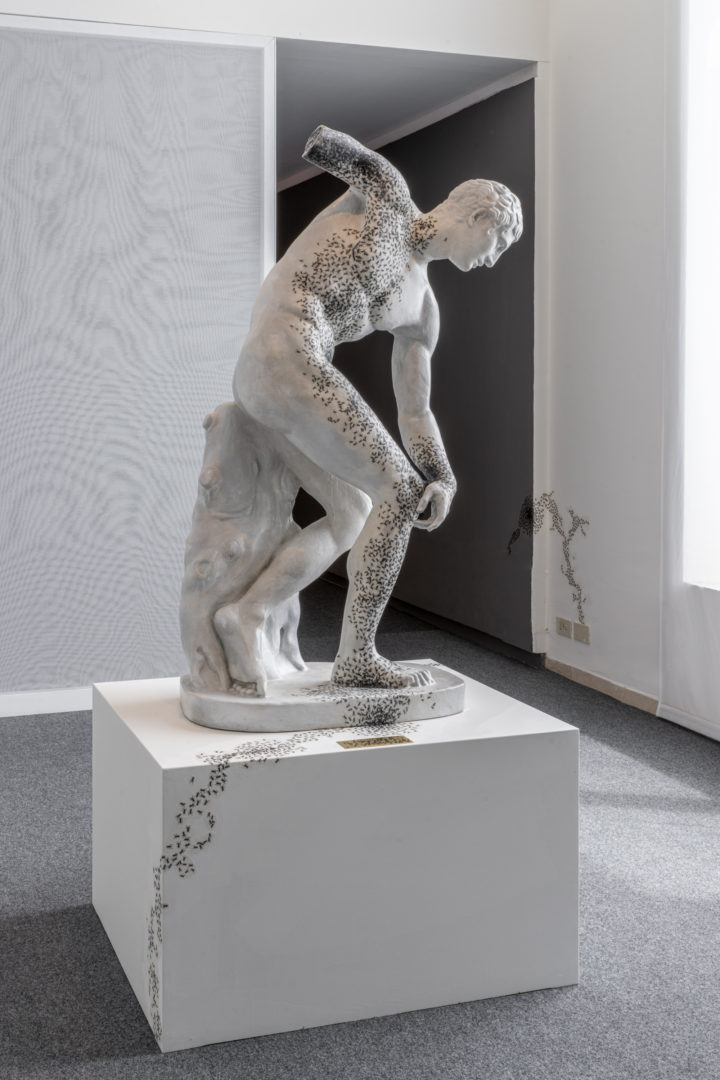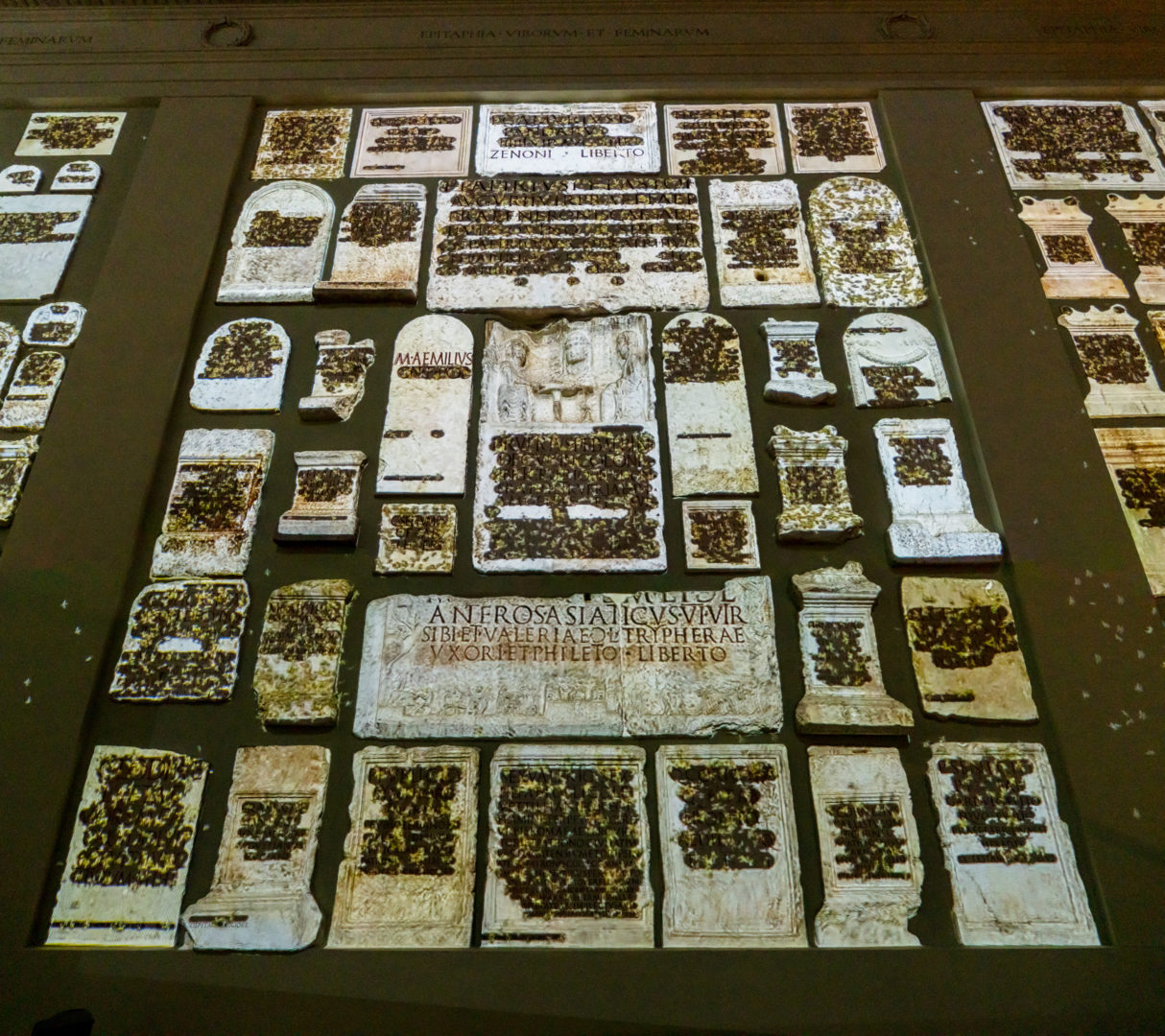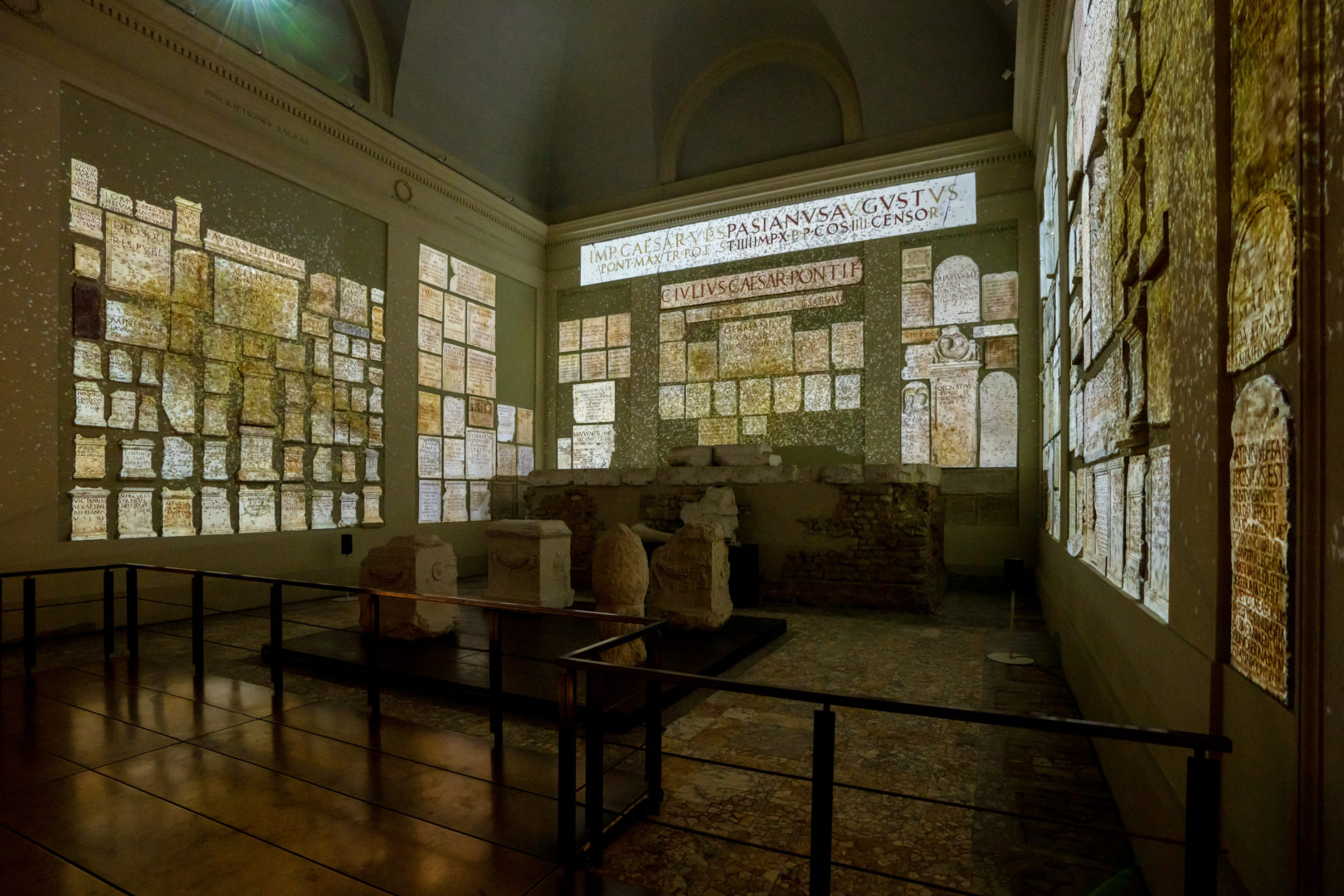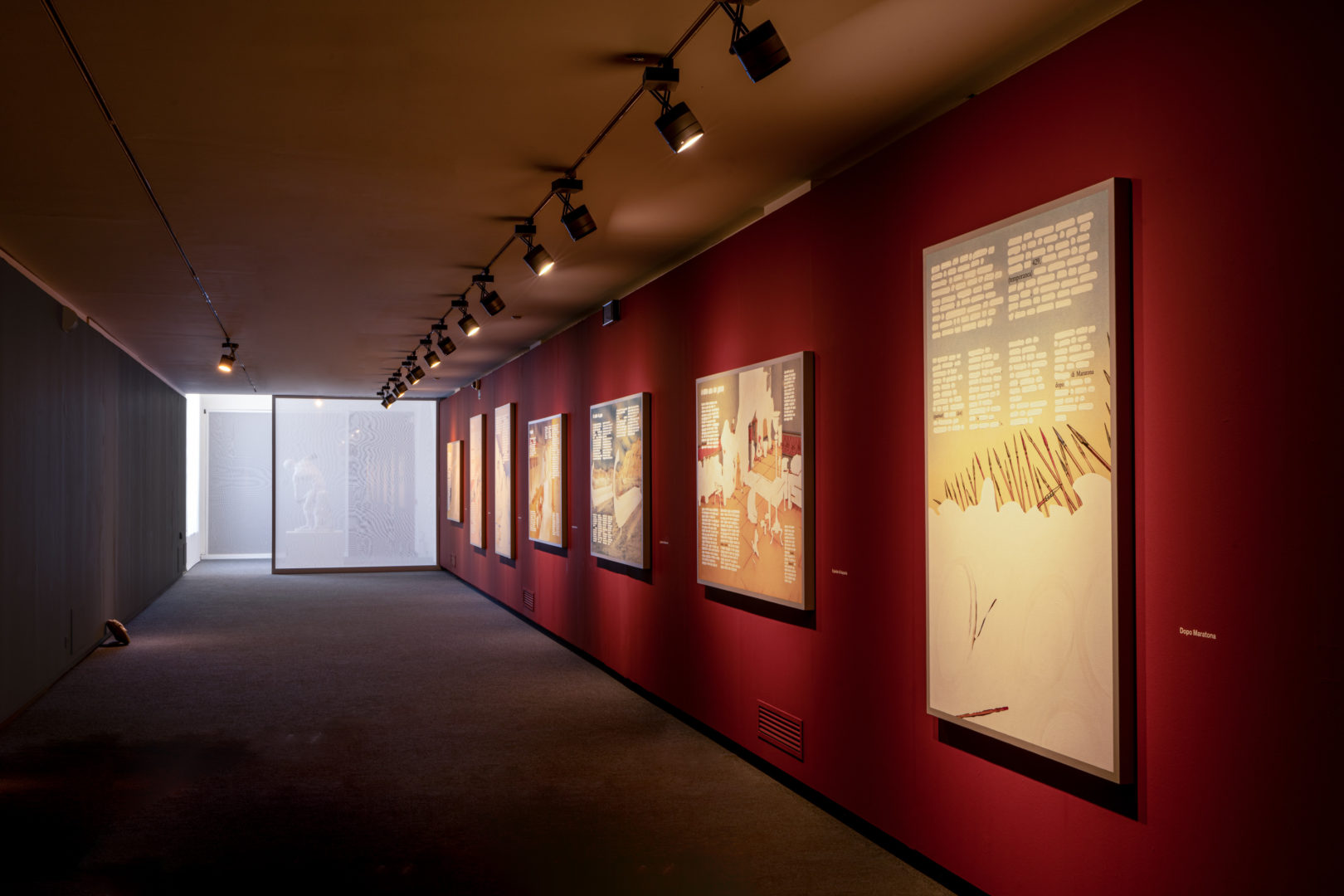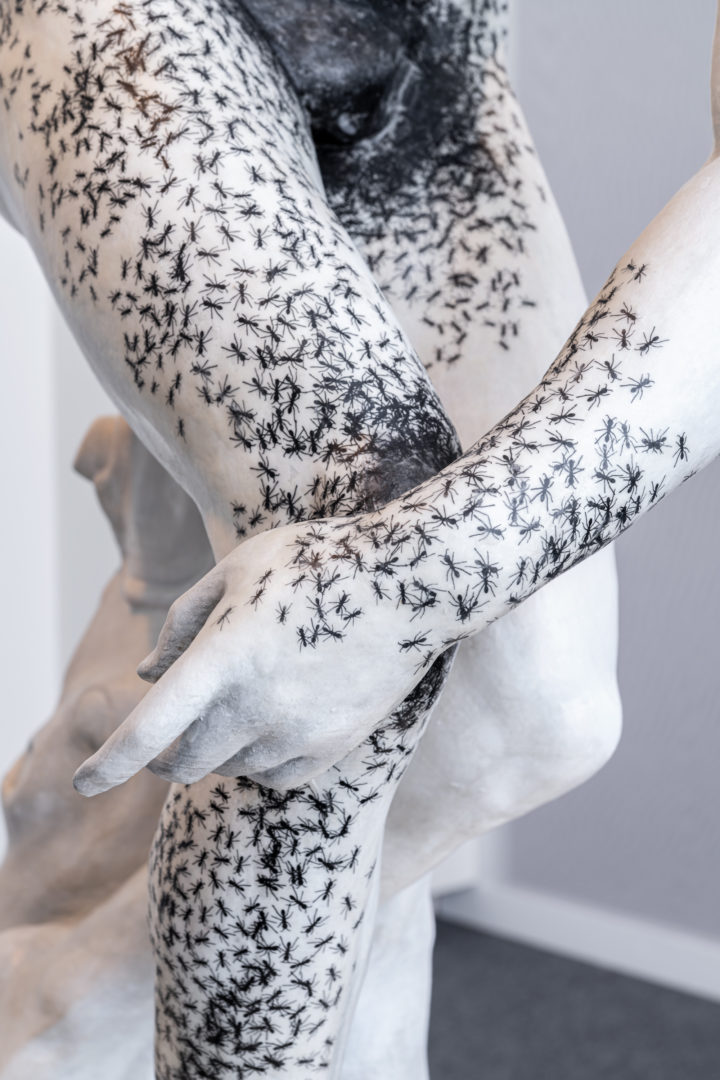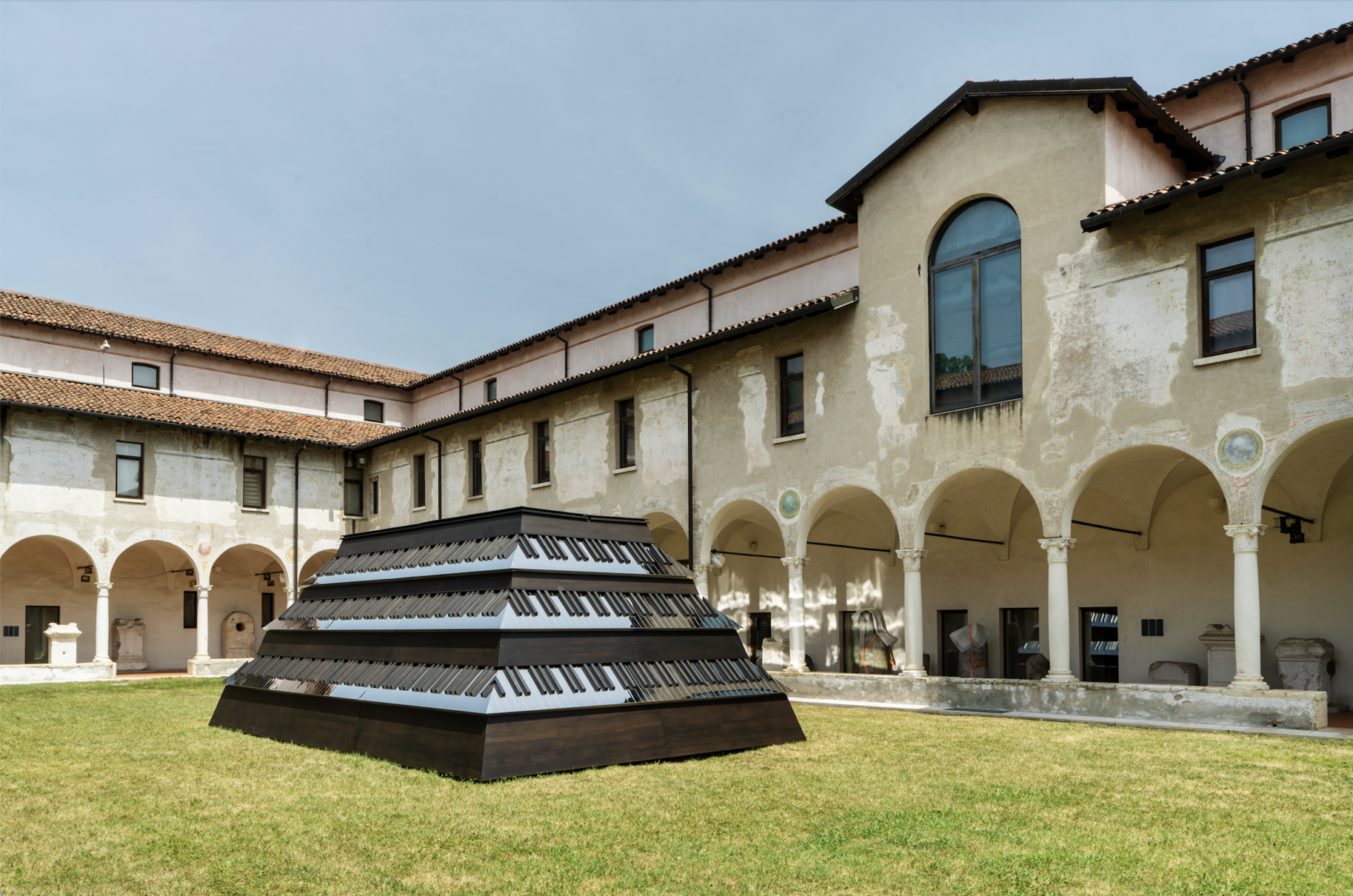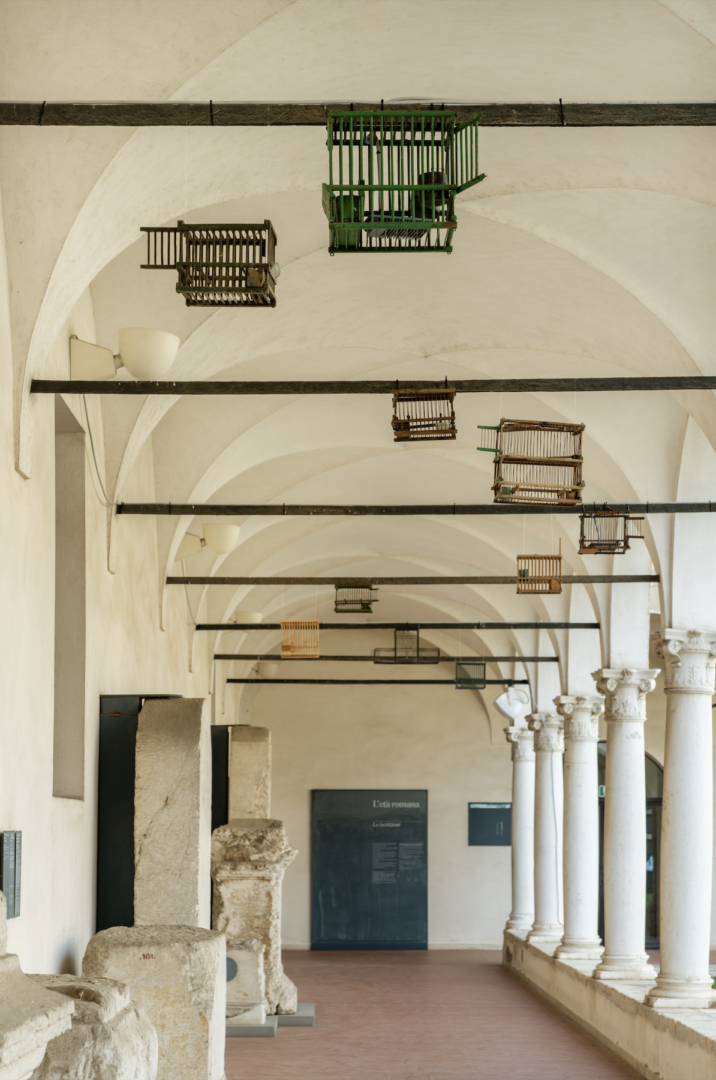Isgrò cancella Brixia
From 23 June 2022 to 08 January 2023
After the making of Incancellabile Vittoria (Undeletable Victory), the monumental installation revealed in October 2020 in Brescia’s underground FS station to celebrate the return of the Winged Victory, Emilio Isgrò reconfirms his bond with the city through a new, large-scale and original project that, from 23 June 2022 to 8 January 2023, takes over the most important sites of the Roman Brescia Archaeological Park (the largest in northern Italy) and the Santa Giulia Museum, stretching from the Capitolium to the Roman Theatre, and from the Renaissance Cloister to the Viridarium gardens.

Due to the great success of the exhibition, the installations Le api di Virgilio (Virgil’s bees) and L’armonium delle allodole impazzite (Harmonium of the mad larks) will be open to the public until 16 April.
The exhibition
Curated by Marco Bazzini
The exhibition project entitled Isgrò cancella Brixia (Isgrò deletes Brixia), curated by Marco Bazzini, aims to establish a dialogue between archaeology and contemporary art, history and the present day, classic culture and its presence in our time and is composed of physical and digital monumental installations, all conceived and realised by the artist for this occasion, taking into account the suggestive spaces where they are to be installed.
The exhibit starts from the central hall of the Capitolium, an authentic epigraphic museum that contains the work entitled Le api di Virgilio (Virgil’s bees), consisting of a swarm of bees concealing the Roman inscriptions on the wall: a spectacular installation made with the most advanced digital technologies, where deletion takes the form of lively images in motion.
The Santa Giulia Museum complex hosts three further sections of the exhibition project. In the magnificent atmosphere of the Renaissance cloister, placed on the lawn visitors find the L’armonium delle allodole impazzite (Harmonium of the mad larks), an enigmatic and monumental musical instrument, whose perimeter is marked by a sequence of piano keys. The silent location, is filled by the notes of the Casta diva aria from Vincenzo Bellini’s Norma, one of the most powerful masterpieces of Italian operatic tradition, set in Roman Gaul. The version of the piece that captured Richard Wagner is that transcribed by Frédéric Chopin for piano, as a tribute to the Brescian pianist Arturo Benedetti Michelangeli, interpreted by the chirping of a lark accompanied by a chorus of birds. This work, presented for the very first time in Brescia, will be produced by Fondazione Brescia Musei in co-production with Arte Sella, the major contemporary art park in Val di Sella, Valsugana (Trento) where at the end of the Brescian exhibition it will be permanently installed in an outdoor location chosen by the artist himself.
The exhibition rooms of the Santa Giulia Museum also hosts an unprecedented cycle of paintings entitled Brixia come Atene (Brixia like Athens). Thirteen large canvases in which the illustrated pages of a book on the daily life of an ancient Greek polis are erased.

Initiatives
The vast themes of the antique and the contemporary are also an opportunity to bring back to the fore the theatre of this multifaceted artist who, in the early 1980s, marked an important step in contemporary dramaturgy with the Orestea trilogy staged on the ruins of the old town of Gibellina destroyed by the earthquake.
On Thursday, 23 June 2022, the Roman Theatre, another fascinating venue along the archaeological route of ancient Brescia, hosts the premiere of Didone Adonais Domine, one of the plays written by Isgrò and produced by the Centro Teatrale Bresciano, starring actress Sandra Toffolatti and directed by Giorgio Sangati. The play, written in 1983, has been staged only once in August 1986 in Barcellona Pozzo di Gotto (Messina) at the Mandanici Theatre.
The show is offered in six replicas: in addition to 23 June, the performance also takes place on Friday 24 and Sunday 27 June, as well as 1, 2 and 3 July.
Who is Isgrò?

Emilio Isgrò (Barcellona Pozzo di Gotto, Messina, 1937)
Considered one of the innovators of the post-war Italian art scene, Emilio Isgrò is the undisputed father of cancellature, acts of deletion he began experimenting with in the early 1960s and which today still retain the same liveliness and creative audacity. The artist began to make his first interventions on texts back in 1964, working in particular on book pages, manually covering large parts of them with rigorous pictorial grids. Over time, Isgrò extended this gesture also to maps, telex releases, films and musical scores, anticipating the most typical expressions of conceptual art, also using it in installations. His 1980s transition from black to white deletions, led to pictorial results that are constantly renewed.That of deletion is the unmistakable language of Emilio Isgrò’s artistic research, which today appears as an alternative philosophy to the vision of the contemporary world: it explains more than it says.
His works are in the collections of major national and international private and public collections.

